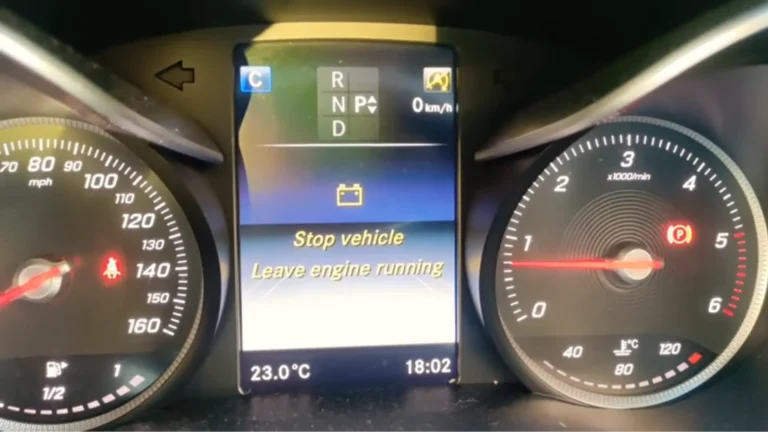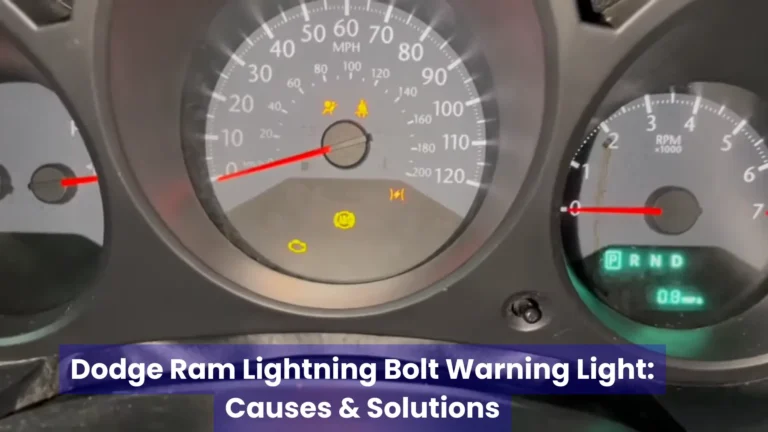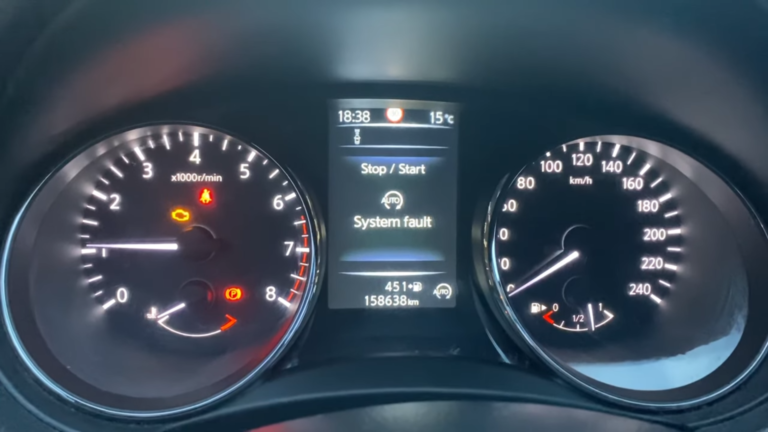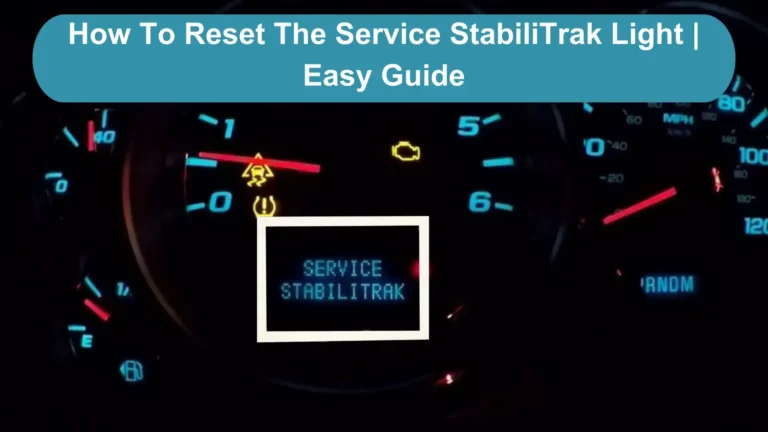Holden Captiva Problems & Potential Solutions

The Holden Captiva is a well-liked SUV that is a good choice for families due to its versatile interior design. However, like any other SUV, it has some common problems. This guide discusses the most common Holden Captiva problems, their fixes, and maintenance costs.
I’ll share some of my knowledge about the Holden Captiva based on my expertise and experience, having recently measured its reliability issues. Whether you own one or are planning to purchase one, you must be aware of the possible issues you may face.
Holden Captiva Problems: Detailed Guide
Knowing the components and functions of the Holden Captiva vehicle is beneficial for its owners because it helps ensure a safe and smooth driving experience. Here are some of the most common Holden Captiva issues that you can encounter:
Stretched Timing Chains (V6 Petrol Engines)
Stretched timing chains are a pointable issue in specific V6 petrol engines (earlier models (2006-2011). Due to the timing chain elongating beyond its normal limits, this problem comes to the vehicles and causes poor engine performance, rough idling, and misfires.
Moreover, the stretched chain may affect the synchronisation system between the engine and the crankshaft. A comprehensive inspection of the timing chain, tensioners, and related components is crucial for precisely addressing and fixing the issue.
Symptoms: Engine rattling, rough idling, poor engine performance, and eventually engine failure.
Cost: The cost of stretched timing chains typically ranges from $1,500 to $4,000 and can be low or high, depending on the parts and labor rates.
Automatic Transmission Issues
The automatic transmission issues have been reported from both (petrol and diesel) Captivas. Most Captiva owners report issues such as slipping gears, transmission failure, delay in gear engagement, and rough shifting.
These problems can occur due to various causes, such as solenoid faults, worn-out transmission fluid, worn clutches, torque converter problems, and mechanical issues.
Symptoms: Rough shifting or hard shifts, gears slipping, and complete failure.
Cost: A transmission fluid change can normally cost between $200 and $300, while a rebuild/repair or replacement of the Transmission may cost around $2,500 to $4,000.
Oil Leaks
Oil leaks are a frequent problem in Holden Captivas(especially in older vehicles). This issue can harm different elements in the engine and flow from various parts, such as oil pan gaskets, valve cover gaskets, and the rear main seals. Oil leaks may lead to poor lubrication, causing engine parts to wear faster and ultimately cause expensive damage.
Symptoms: Oil spots under the vehicle, low oil levels, worn gaskets, loose seals, blue smoke from the exhaust system, and a burning oil smell.
Cost: Only replacement of the valve cover gasket may cost like replacements, while replacement of the rear main seal can typically cost $600 to $1,200.
Electrical and Electronic Problems
Owners frequently report electrical and electronic problems in their Holden Captiva vehicles. These issues may include faulty wiring, sensors, and erratic dashboard lights. However, poor connections, older components, and software glitches can cause these issues.
Symptoms: Damaged sensors, System bugs, faulty electrical components, and intermittent starting problems.
Cost: Small electrical repairs can cost around $100-$300, while more complex and labor-intensive issues like infotainment system replacement could cost you $500-$1,000 or more.
Diesel Particulate Filter (DPF) Problems (Diesel Models)
2014 Holden Captiva problems include DPF issues that are common in diesel models. The diesel particulate filter (DPF) is designed to decrease the emission level by capturing and using the exhaust soot.
Symptoms: Reduced engine performance, increased fuel consumption, and warning lights on the dash.
Cost: You can expect to pay around $300-$500 for forced regeneration, while replacing the diesel particulate filter (DPF) can be expensive, ranging from $1,500-$3,000.
Steering Issues
Some Captiva owners also complain that steering issues affect their vehicles and safety at a minor level. These issues include heavy steering, unusual turning noises, and power steering loss, which can arise from various elements, such as steering fluid with low power and faulty steering components.
Symptoms: Hard at turning wheel, screech noises, and steering wheel vibration or pulling at one side.
Cost: Topping up the power steering fluid is estimated to cost $50-$100, replacing the power steering pump can cost $400 to $800, and replacing the steering rack can be significantly expensive, costing around $1,000 to $1,500.
Air Conditioning Problems
Air conditioning problems are the last of our most common 2013 Holden Captiva errors. These may impact the comfort of the passengers, so they report issues such as noises when the AC is on, poor cooling, or a system failure. These issues can develop from various parts, such as faulty evaporators, compressors, condensers, or refrigerant leaks.
Symptoms: Unusual noises, sealing leaks, warm air blowing, and musty smell.
Cost: Only a refrigerant recharge costs around $200 to $300, while costly repairs such as compressor replacement can cost $800 to $1,500.
You might also like:
https://sinceremechanic.com/nissan-elgrand-problems/
https://sinceremechanic.com/haval-jolion-problems/
Tips For Preventive Maintenance
Schedule maintenance is necessary for Holden Captiva Problems to prevent costly repairs and mitigate many major issues. Here are some tips that you can adopt to maintain your vehicle’s performance and life cycle:
- Regular service: Regularly service your Holden Captiva according to the recommended service intervals for oil changes, filter changes, transmission fluid changes, brake checks, and other routine maintenance.
- Monitor fluid levels: Regularly monitor the engine oil, transmission fluid, and brake fluid (and top up if needed).
- Listen for strange noises: Take it seriously and pay attention to any unusual sounds from the suspension, brakes, or engine. Then, check promptly or get help from a professional technician.
- Check tires and brakes: Inspect your tires for wear and the brakes and their components to ensure they are in good condition.
- Cooling System Check: Inspect the cooling system and ensure it is flushed and refilled at the recommended intervals to prevent issues like engine overheating.
Holden Captiva Years To Avoid
Knowing the different model years reported due to serious issues is essential when buying a Holden Captive. Therefore, here are some of the old Captiva years that the experts normally recommend to avoid:
| Model Year | Reasons to avoid |
|---|---|
| 2007-2008 | Engine Issues: Excessive oil consumption, engine failure. Transmission Problems: Rough shifting, failure. |
| 2008-2009 | Timing Chain Issues: Premature wear, leading to engine damage. Electrical Problems: Battery drainage, faulty sensors. |
| 2010-2011 | Water Leaks: Sunroof and door seals causing water ingress. Oil Leaks: Leaks from the engine and transmission. |
| 2012-2013 | Power Steering Issues: Power steering failure, fluid leaks. Brake Problems: Premature wear of brake pads and rotors. |
Holden Captiva – Are They As Bad As People Say?
Before investing money in anything, a minor market research and analysis is necessary to make a beneficial decision. Moreover, this review guide from the expert will increase your knowledge about Holden Captiva vehicles:
Conclusion
While the Holden Captiva offers numerous advantages to its owners, it’s necessary to be aware of its potential problems. After understanding the common issues, their symptoms, and estimated costs, you can better maintain your vehicle and enhance its optimal performance.
You can improve your Captiva ownership experience by regularly maintaining and promptly addressing the issues. At the same time, awareness of Holden Captiva’s problems is crucial and beneficial for current or future Captiva owners.
FAQ – Frequently Asked Questions
Is the Holden Captiva a good car to buy?
Car buyers are mostly concerned about the reliability and durability of their selected vehicle. After much testing, checks, and experiments, the professional decided that the Holden Captiva was not the most reliable and durable car.
Is Holden Captiva a Daewoo?
The Holden Captiva was launched to compete with the Ford Territory. It is also known by two different names: Daewoo Windstorm and Chevrolet Captive. When it was first released in the international market in 2006, it was sold as Chevrolet Captiva.
What is the average fuel consumption of a Holden Captiva vehicle?
The best model of this brand is the Holden Captiva 2018, a 7-seat SUV with a 5-star rating from ANCAP. It is available with diesel and petrol engines and has an average fuel economy of 7.9L/100km to 10.7L/100km.
Why did the Holden brand fail in Australia?
The failure of the Holden vehicles in Australia was due to several major factors, such as high manufacturing costs, various issues reported by the customers, and a slow response to converting their customers towards electric vehicles and SUVs.
Martin Lee is an ASE-certified mechanic and contributing author at SincereMechanic. He uses his expertise to create captivating articles that align with our content strategy. Using his deep automobile knowledge, he does in-depth research, puts expertise into articles, and makes them very informative. That information ensures our readers receive many valuable insights about the Vehicles.


![Best Subaru Forester Years & Years To Avoid [Detailed Guide] 2 best subaru forester years](https://sinceremechanic.com/wp-content/uploads/2024/10/best-subaru-forester-years-768x432.webp)



![Mazda Battery Management System Malfunction [Solved] 2025 6 mazda battery management system malfunction](https://sinceremechanic.com/wp-content/uploads/2024/07/mazda-battery-management-system-malfunction-768x432.webp)